Flower Carpet and Manneken Pis (No.61)
The previous day I was reading the ‘Tax Survey’ (279 pages) of this fiscal year published by the Belgian Ministry of Finance and was surprised by the fact that there is a big difference in the inheritance tax system between Japan and Belgium. In the case of Belgium there are slight discrepancies between the Dutch-speaking and French-speaking regions, but to sum up the different systems in both countries in short, in Japan there is no tax (or a low tax rate) on smaller inheritance sums (total tax exemption), but a really high tax rate on large sums (up to 50% maximum, 55% from 2015 onwards). In Belgium, on the other hand, for even the lowest inheritance sums the tax rate is 3% and it reaches up to 30% for large sums (27% in the Dutch-speaking region). Of course there are various exemptions and reductions in this tax system so it is hard to make a simple comparison. It seems to be the case that the inheritance system in place in Belgium for spouses or lineal relatives is lenient towards inheritors of large sums in general. On the other hand, when the inheritors are siblings or uncles and aunts the tax rate increases sharply up to 65%-80%. Therefore if there was no spouse or children living with the deceased person, it seems difficult to inherit that person’s real estate (a castle with a large estate for example). That said, an elderly gentleman, who is a Belgian acquaintance of mine and is living by himself without children in a castle that has been in the possession of his family for generations, told me that he has decided to give away the castle to a society that will preserve it after his death. Another acquaintance whose father passed away last year told me that he put for sale the castle where his father lived alone. When comparing the differences of the inheritance system of each country, you are getting to see the differences of basic philosophy upon which each country is built.
<Japanese Garden in Vilvoorde>
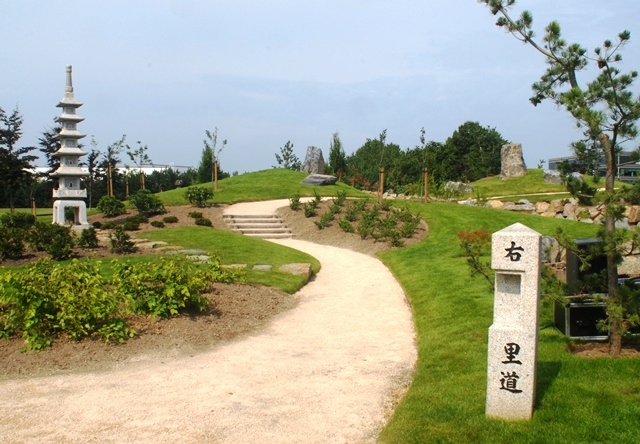 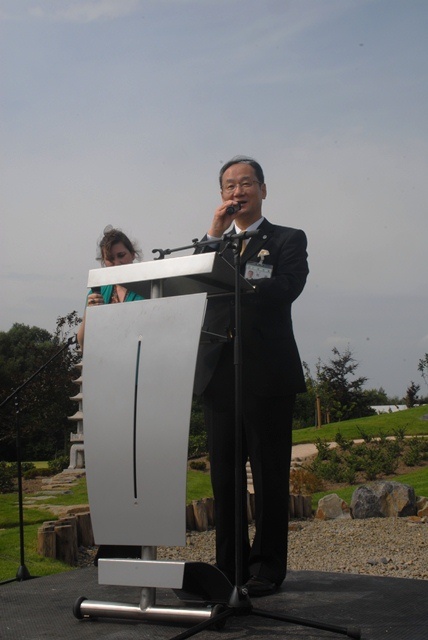 At the beginning of this month in Vilvoorde, adjacent to the north of Brussels, a Japanese garden was opened. The garden, which was created in one of the corners of the vast city-owned domain called ‘Domein Drie Fonteinen’, was donated by the city of Komatsu in Ishikawa Prefecture, to celebrate the 40th anniversary of the sister-city partnership with Vilvoorde. Accordingly, both the mayor of Vilvoorde, Hans Bonte, and the mayor of Komatsu, Shinji Wada, attended the opening ceremony. Furthermore, besides several council and city representatives including chairperson of the Komatsu city council, Kenkichi Miyanishi, by chance eight high-school students of Komatsu, who were participating to a homestay exchange program in Vilvoorde at this time, also attended, making it a splendid ceremony. At the beginning of this month in Vilvoorde, adjacent to the north of Brussels, a Japanese garden was opened. The garden, which was created in one of the corners of the vast city-owned domain called ‘Domein Drie Fonteinen’, was donated by the city of Komatsu in Ishikawa Prefecture, to celebrate the 40th anniversary of the sister-city partnership with Vilvoorde. Accordingly, both the mayor of Vilvoorde, Hans Bonte, and the mayor of Komatsu, Shinji Wada, attended the opening ceremony. Furthermore, besides several council and city representatives including chairperson of the Komatsu city council, Kenkichi Miyanishi, by chance eight high-school students of Komatsu, who were participating to a homestay exchange program in Vilvoorde at this time, also attended, making it a splendid ceremony. 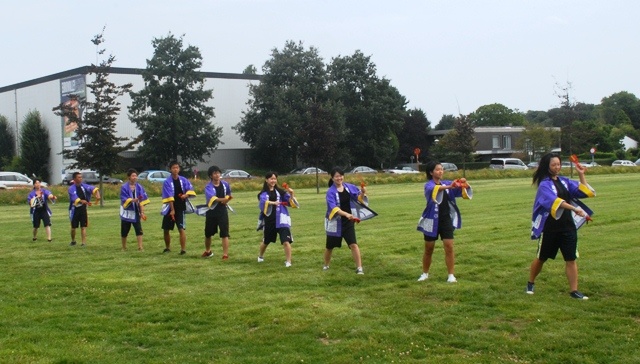 yomoyama_061_vilvoorde3Actually, in May of this year, a ceremony for the opening of a rose garden, donated from the city of Vilvoorde to the city of Komatsu, was held and on this occasion Mayor Hans Bonte visited the city of Komatsu. One can say that this is a ‘dream project’ achieved by the friendship and enthusiasm of both mayors. The ceremony this time was animated by a performance of Japanese drums, a ‘Yosakoi’ dance performed by Komatsu high-school students, as well as by an open-air tea ceremony in the garden. With the many instances of sister-city partnerships becoming a dead letter, the fact that more and more exchange projects are increasingly active, as is the case in Komatsu and Vilvoorde, is something to be truly glad about. yomoyama_061_vilvoorde3Actually, in May of this year, a ceremony for the opening of a rose garden, donated from the city of Vilvoorde to the city of Komatsu, was held and on this occasion Mayor Hans Bonte visited the city of Komatsu. One can say that this is a ‘dream project’ achieved by the friendship and enthusiasm of both mayors. The ceremony this time was animated by a performance of Japanese drums, a ‘Yosakoi’ dance performed by Komatsu high-school students, as well as by an open-air tea ceremony in the garden. With the many instances of sister-city partnerships becoming a dead letter, the fact that more and more exchange projects are increasingly active, as is the case in Komatsu and Vilvoorde, is something to be truly glad about.
<Flower Carpet and the Grand Place>
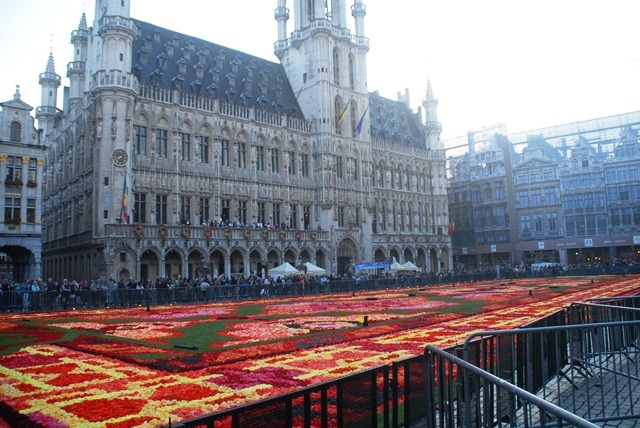 The 14th of last week was the opening night event for the biennial flower carpet in Brussels’ Grand Place and I enjoyed the huge flower carpet from the city hall’s balcony. The event ran for three days from the 15th to the 17th, and I think there must have been many amongst the Japanese tourists and Japanese living in Belgium to have visited the Grand Place. In the 1800 square metre (75 by 25 metres) rectangular field a variety of colourful begonia flowers were arranged mimicking a Turkish carpet. Over 350,000 begonias were used and each year 60 million begonias are grown, of which 80% are exported—so it is an event unique to Belgium. The 14th of last week was the opening night event for the biennial flower carpet in Brussels’ Grand Place and I enjoyed the huge flower carpet from the city hall’s balcony. The event ran for three days from the 15th to the 17th, and I think there must have been many amongst the Japanese tourists and Japanese living in Belgium to have visited the Grand Place. In the 1800 square metre (75 by 25 metres) rectangular field a variety of colourful begonia flowers were arranged mimicking a Turkish carpet. Over 350,000 begonias were used and each year 60 million begonias are grown, of which 80% are exported—so it is an event unique to Belgium.
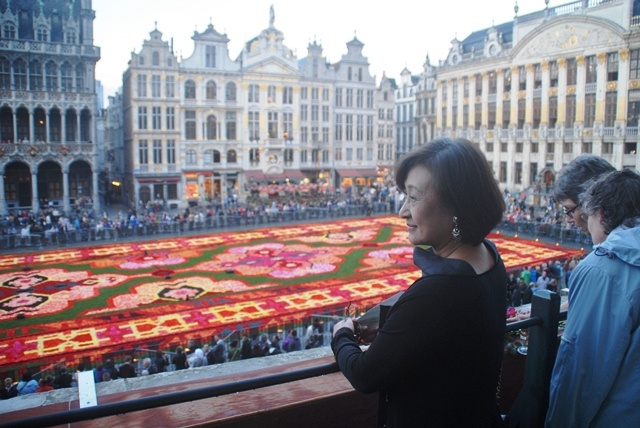 The Grand Place’s flower carpet has a very short history compared to the Floralies of Ghent, boasting a history of more than two-hundred years. The flower carpet was held for the first time in 1971. In the beginning the event was held irregularly every six years and two years consecutively, but in 1986 from the fifth edition onwards it was decided to be held biennially, marking this year the nineteenth edition. Every time a new theme is chosen and this year the carpet had a Turkish carpet motif to celebrate the fiftieth anniversary of the immigration agreement between Belgium and Turkey. The number of Turkish residents in Belgium is currently exceeding 220,000—it would seem quite significant to celebrate such a fifty-year anniversary. By the way, the Japanese television NHK has covered the event from the preparatory phase of this year’s flower carpet. It is planned to be broadcasted as a one-hour special. So many Japanese will most likely also get to enjoy the event. The Grand Place’s flower carpet has a very short history compared to the Floralies of Ghent, boasting a history of more than two-hundred years. The flower carpet was held for the first time in 1971. In the beginning the event was held irregularly every six years and two years consecutively, but in 1986 from the fifth edition onwards it was decided to be held biennially, marking this year the nineteenth edition. Every time a new theme is chosen and this year the carpet had a Turkish carpet motif to celebrate the fiftieth anniversary of the immigration agreement between Belgium and Turkey. The number of Turkish residents in Belgium is currently exceeding 220,000—it would seem quite significant to celebrate such a fifty-year anniversary. By the way, the Japanese television NHK has covered the event from the preparatory phase of this year’s flower carpet. It is planned to be broadcasted as a one-hour special. So many Japanese will most likely also get to enjoy the event.
<Manneken Pis in Samurai Uniform>
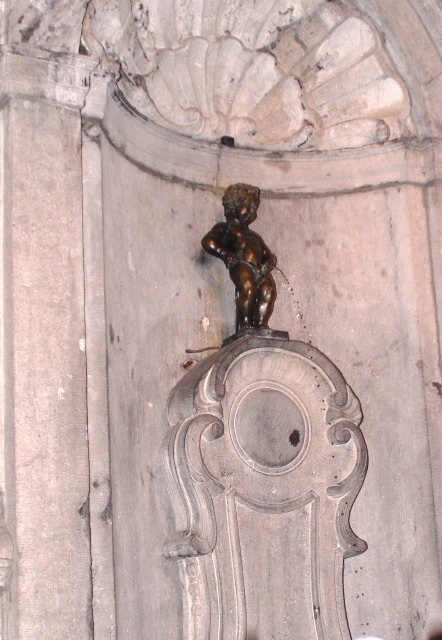 About 200 metres south of Brussels’ Grand Place in an alley stands the statue of ‘Manneken Pis’. It is quite a mystery how such an easy-to-overlook, small statue has become so well-known around the world and become such a famous touristic spot. The statue that was built as a fountain in 1619 is said to be a sign of the wild humour of the local people of Brabant. An image of a little boy peeing on the side of a public road is undoubtedly something unique. Moreover, a public property to have been stolen as frequently as this statue is quite rare. The story goes that in the eighteenth century the British and French army who invaded Brussels had taken the ‘city symbol’. More recently it has again been stolen by students during the full-on-going rage of the campus troubles in the 1960s. About 200 metres south of Brussels’ Grand Place in an alley stands the statue of ‘Manneken Pis’. It is quite a mystery how such an easy-to-overlook, small statue has become so well-known around the world and become such a famous touristic spot. The statue that was built as a fountain in 1619 is said to be a sign of the wild humour of the local people of Brabant. An image of a little boy peeing on the side of a public road is undoubtedly something unique. Moreover, a public property to have been stolen as frequently as this statue is quite rare. The story goes that in the eighteenth century the British and French army who invaded Brussels had taken the ‘city symbol’. More recently it has again been stolen by students during the full-on-going rage of the campus troubles in the 1960s.
One more quite interesting fact about Manneken Pis is that there is an old tradition of dressing up the statue. This tradition is told to have started at the end of the seventeenth century when the governor-general, representative of the Spanish king, who was stationed in Brussels, had the statue dressed up in Spanish fashion. The King’s House in front of the city hall of Brussels has now become home to the museum of Brussels’ history and many of the statue’s costumes are displayed on the second floor. According to a guide book, there are 760 statues on display, each dressed up in various costumes, two of which are clearly donated by Japan. The first one wears the clothing of ‘Momo Taro’, a hero in an old Japanese fairy tale, and another one is in a samurai uniform. I am interested to know who and on what occasion these were donated.
<Ravenstein Golf Course>
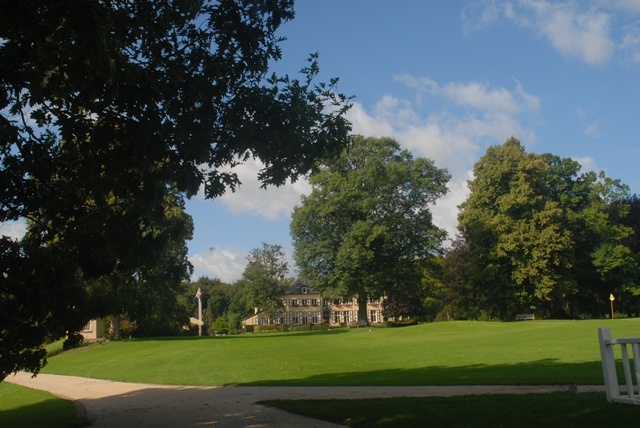 Situated in a suburb to the southeast of Brussels there is the prestigious golf course of the Royal Golf Club of Belgium (RGCB), also referred to as ‘Ravenstein’. Being a golf enthusiast, I have become an annual member and (if work permits me) I try to go to the golf course in the weekends. Especially this summer I have not left Belgium on vacation and so I entered every game in the ‘Summer Challenge’ club competition, which is held every weekend, and enjoyed playing with my Belgian companions. Belgium’s golf environment is marvellous. Club members can go in without a reservation and play freely (even if alone). There is no hassle as in Japan where you have to make a reservation for a team of three to four and play with a golf cart accompanied by a caddy. You also do not have to have a nearly one-hour lunch between the first and second half. Situated in a suburb to the southeast of Brussels there is the prestigious golf course of the Royal Golf Club of Belgium (RGCB), also referred to as ‘Ravenstein’. Being a golf enthusiast, I have become an annual member and (if work permits me) I try to go to the golf course in the weekends. Especially this summer I have not left Belgium on vacation and so I entered every game in the ‘Summer Challenge’ club competition, which is held every weekend, and enjoyed playing with my Belgian companions. Belgium’s golf environment is marvellous. Club members can go in without a reservation and play freely (even if alone). There is no hassle as in Japan where you have to make a reservation for a team of three to four and play with a golf cart accompanied by a caddy. You also do not have to have a nearly one-hour lunch between the first and second half. 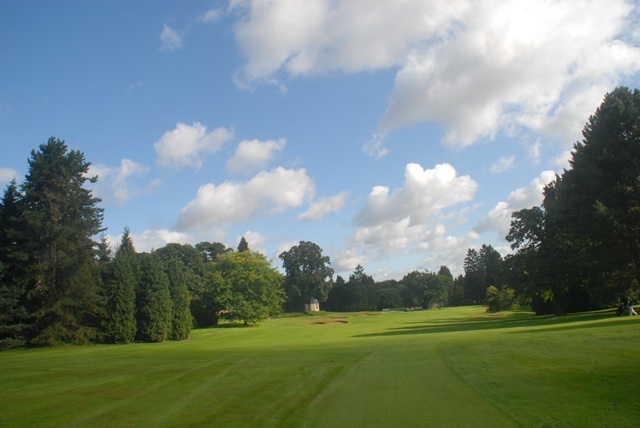 While the golf club has close to 1800 members (a large majority of them are elderly people), only about 250 to 300 members actively play in reality. The remainder seem to spend their time having lunch or dinner, or playing Bridge with friends at the club house. Especially in the summer, the majority of the members leave on vacation making the golf course almost empty. At times even it would occur that I was playing alone as if I had chartered the course for myself. That is something unthinkable in Japan. However, the problem is from late October to mid-April, when for nearly half a year the winter cold and the muddy course make it an unsuitable time to play. Now for me returning to Japan in September I will have several months ahead of me of leaves changing their colours in autumn and many golf courses in the suburbs of Tokyo will go into the most beautiful season. Even after my return home I think I will enjoy some ‘old man golf’ for a while. While the golf club has close to 1800 members (a large majority of them are elderly people), only about 250 to 300 members actively play in reality. The remainder seem to spend their time having lunch or dinner, or playing Bridge with friends at the club house. Especially in the summer, the majority of the members leave on vacation making the golf course almost empty. At times even it would occur that I was playing alone as if I had chartered the course for myself. That is something unthinkable in Japan. However, the problem is from late October to mid-April, when for nearly half a year the winter cold and the muddy course make it an unsuitable time to play. Now for me returning to Japan in September I will have several months ahead of me of leaves changing their colours in autumn and many golf courses in the suburbs of Tokyo will go into the most beautiful season. Even after my return home I think I will enjoy some ‘old man golf’ for a while.
|